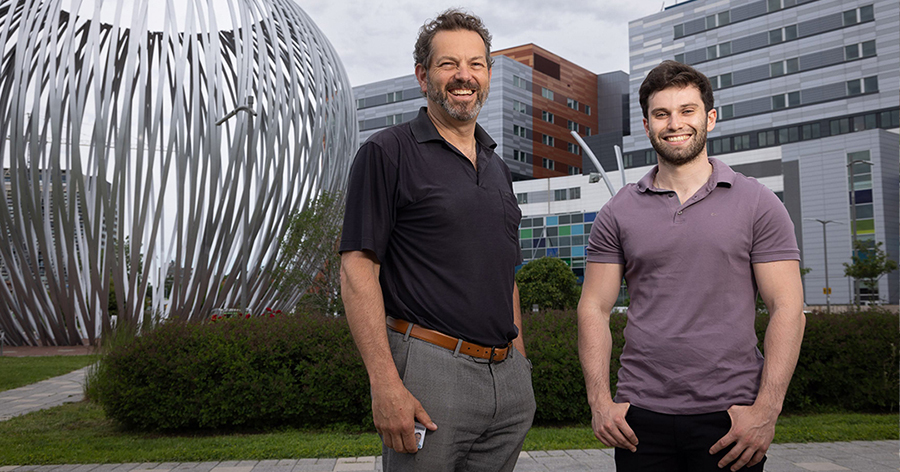
Breadcrumb
- News and Events
- News
- Content
- Staying ahead of the curve with SeeSpine
null Staying ahead of the curve with SeeSpine

Winners of the Hakim Family Innovation Prize at the McGill Clinical Innovation Competition develop a smartphone app to monitor pediatric scoliosis remotely
By Diane Lynn Weidner
Source: Health E-News. The early signs of scoliosis, an abnormal lateral curvature of the spine, can be subtle – a slight tilt in the shoulders, hips or waist, for example. The most prevalent pediatric spine deformity, Adolescent Idiopathic Scoliosis (AIS), affects 1-3 per cent of youths between the ages of 10-16 in North America (approximately 7-11 million). The key to successful management of AIS is early detection via close monitoring of the spine.
How can physicians monitor patients closely in order to identify those who need treatment while limiting radiation exposure for the vast majority who don’t?
Robust, timely scoliosis screening
To address this problem, Jean Ouellet, MD, Pediatric Spine Surgeon at the Montreal Children’s Hospital, McGill University Health Centre (MUHC), senior scientist at the Research Institute of the MUHC and Professor in Orthopedic Surgery at McGill University, has been working closely with Evan Dimentberg, MD/M.Sc. candidate in the Faculty of Medicine at Université Laval, on an innovative solution to detect and remotely monitor spinal curve progression by leveraging 3D imaging and artificial intelligence.
SeeSpine is an easy-to-use telehealth application that enables young patients, with the help of a trusted family member or friend, to perform a surface topography scan using just a smart phone to predict the underlying spine shape. This evaluation takes 15 seconds and the results can then be transmitted to the patient’s physician for remote monitoring, saving time and money while optimizing patient care.
“The challenge is to predict spine progression and provide corresponding treatment at the opportune time,” explains Dr. Ouellet. “This application has the potential to significantly improve patient outcomes while reducing radiation exposure. Instead of offering the same treatment algorithm to everyone, SeeSpine can increase efficiency and ensure that patients benefit from individualized care. Orthopedic surgeons can see patients who require treatment, while less critical patients can be monitored remotely.”
SeeSpine will conduct three clinical trials this summer, while simultaneously working to complete software development and begin the regulatory approval process. As winners of the McGill CLIC, the team of two is excited to access research and data resources and to obtain assistance identifying funding opportunities.
Read the full story in Health E-News
Aug. 12, 2022